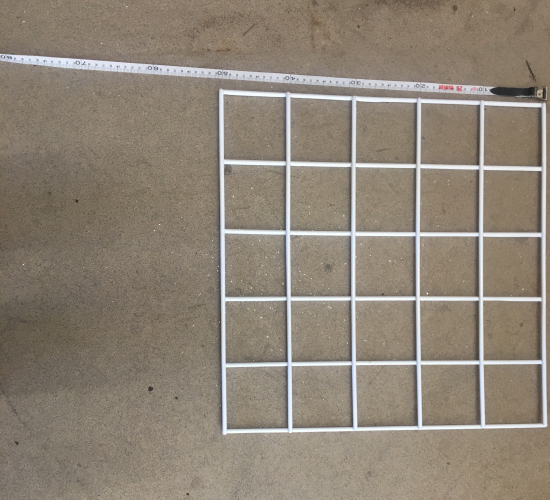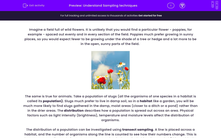Imagine a field full of wild flowers. It is unlikely that you would find a particular flower - poppies, for example - spaced out evenly and in every section of the field. Poppies much prefer growing in sunny places, so you would expect fewer to be growing under the shade of a tree or hedge and a lot more to be in the open, sunny parts of the field.

The same is true for animals. Take a population of slugs (all the organisms of one species in a habitat is called its population). Slugs much prefer to live in damp soil, so in a habitat like a garden, you will be much more likely to find slugs gathered in the damp, moist areas (closer to a ditch or a pond) rather than in the drier areas. The distribution describes how a population is spread out across an area. Physical factors such as light intensity (brightness), temperature and moisture levels affect the distribution of organisms.
The distribution of a population can be investigated using transect sampling. A line is placed across a habitat, and the number of organisms along the line is counted to see how their numbers change. This is known as a sampling technique as not every organism in the entire habitat is recorded (this would take way too long and people generally have better things to do with their time). Instead, only a small section, or sample of a habitat is investigated and this is used to draw a conclusion about the distribution of organisms.
In this worksheet, you will learn how a transect line is used to find out the effect that a physical factor (in this case light intensity) has on the distribution of a plant species. The habitat in question is an open field with one large oak tree.
1. Firstly, use a tape measure to set out a transect line across the field. Start at the base of the oak tree and move outwards.

2. Place a quadrat (this is a square grid usually 0.5 m x 0.5 m in size) at zero next to one side of the tape measure and count all the daisies within the quadrat. If a daisy is more than halfway into the quadrat, include this in your count. If it is less than half in then do not count it.

3. Measure the light intensity in the quadrat and record this. Use a light meter for this (if you do not have one, you can download an app from your phone).
4. Move the quadrat along the transect line and repeat the process. You can place the quadrat directly next to the previous one, or you can place the quadrats at specific intervals along the transect (for example, at every five metres).
As you move away from the shade of the oak tree, you should find that the light intensity increases. You should also find, therefore, that the abundance (or number) of daisies rises as the light intensity increases.
Some limitations of transect sampling:
This type of sampling only really works for very slow-moving animals or plants (imagine trying to count an animal like a rabbit or a grasshopper using a transect and a quadrat - they would just run or jump away)!
This method can be very time consuming if you have lots of organisms to count in each quadrat. Do not space your quadrats too close together if this is the case, so that you don't spend too much time counting.
At the same time, do not space your quadrats too far apart otherwise you could miss changes in the number of organisms in your habitat.
If you only lay down one transect, your results will not be valid. It is best to lay down several transect lines along the habitat and then you will have more trust that your results are accurate.
Now let's have a go at some questions.








